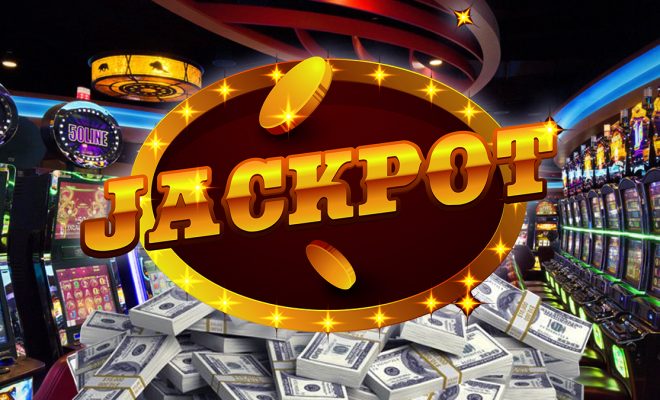Hitting the Jackpot With Progressive Slot Machines

When it comes to slot machines, you have two broad categories. There are flat top slot machines, and there are progressive slot machines.
A flat-top slot machine is more common, and it’s a game where the top prize is a fixed amount. 1,000 coins is a common prize, but it varies by machine.
Progressive slot machines, on the other hand, have top prizes (jackpots) that grow over time until they’re hit. They can be compared to lottery games in that respect. You know how the lottery gets bigger every week if there was no winner the previous week? Hitting the progressive on jackpot on real money slot machines is just like that.
How Big Does the Jackpot Get on a Progressive Slot Machine?
The obvious first question is, how big does the jackpot on a progressive slot machine get? The answer is that it varies based on the game.
You can find progressive jackpots that rival lottery prizes in size. The Megabucks slots in Nevada have the biggest progressive slot machine jackpot in the world. The jackpot starts at $10 million and grows until someone hits it.
When I wrote this post, the jackpot was at $15 million and growing. The biggest the jackpot ever got was in 2003, when it had risen to almost $40 million before getting hit. It’s also gotten as big as $35 million before being hit, too. But that’s on the outside end of the spectrum.
Progressive jackpots can also be much smaller, depending on the casino and the specific game. You can find plenty of progressive jackpots on the other end of the spectrum, too. Online progressives can be as low as $500 or $600.
The advantage to lower-sized progressive jackpots is that you’re more likely to win one. The odds of winning something like Megabucks are astronomically small.
What Does a Progressive Jackpot Do to the Expected Return?
If you’re not familiar with the expression, the “expected return” for a slot machine is the percentage of the money you get back in the long run when playing the machine. It’s expressed as a percentage, and it’s always less than 100%.
Here’s what that means: If you have a slot machine with an expected total return of 94%, you expect to get back 94 cents for every dollar you put into the machine.
If you’re an average slot machine player, you might make 500 spins per hour. If you’re playing for a dollar per spin, you’re putting $500 through the machine per hour.
94% of $500 is $470, which means you’ll lose an average of $30 per hour on that machine.
That’s no guarantee, by the way. That’s an average you can expect in the long run, over dozens of hours. In the short term, you might see an hour or a session where you were up $30 or even $300. You might see other hours or sessions where you lost $60 or $120 or even more. That’s why it’s random.
The Size of the Jackpot Has an Effect on the Actual Return
The actual return on a machine is the actual amount you get back. This is opposed to the theoretical return on the machine, which is what most people mean when they talk about expected return.
But when you’re dealing with a jackpot that has such a low probability of being hit, its theoretical return might as well be zero. After all, if the probability is so close to zero that you might not expect to hit it in a lifetime of play, it might as well not even count.
Megabucks is a good example. The odds of winning the jackpot are about 1 in 50,000,000. How long would it take to make 50,000,000 spins on Megabucks?













